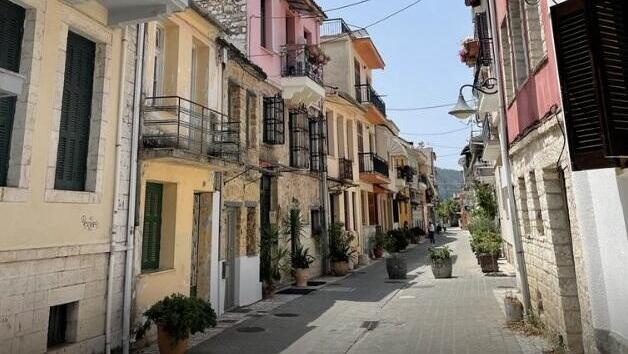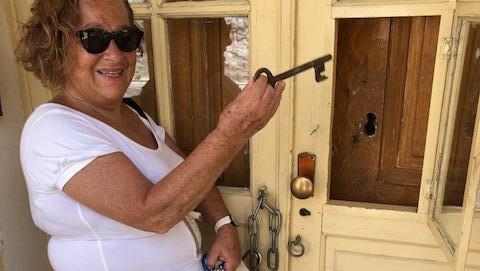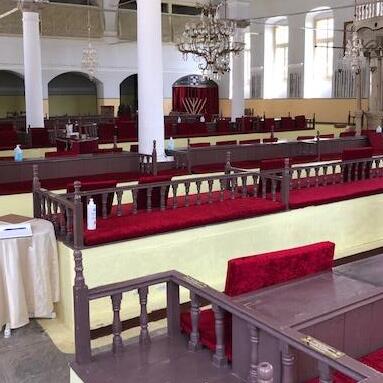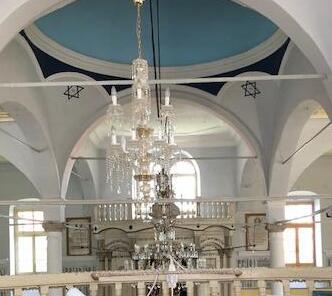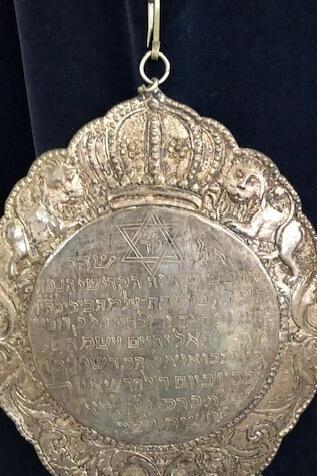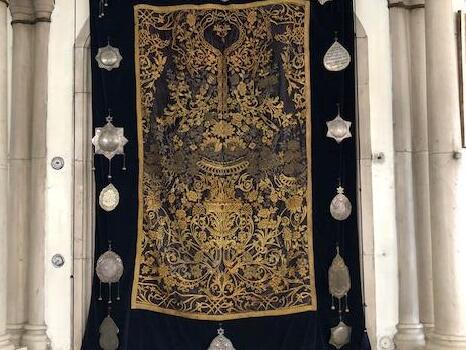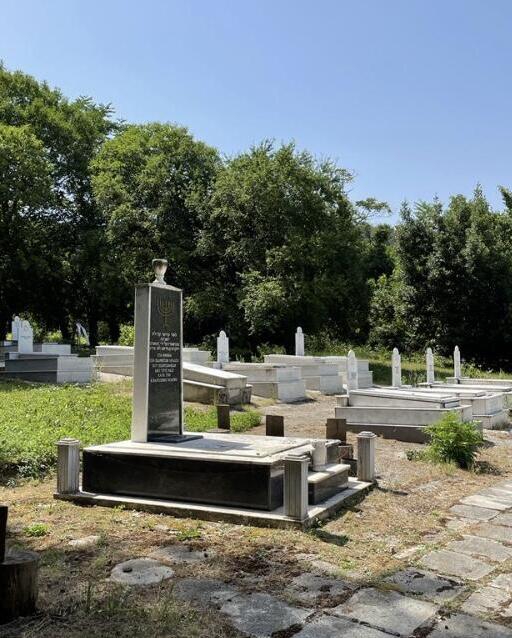Getting your Trinity Audio player ready...
Just a thin thread still connects Ioannina, the capital and largest city of northwestern Greece's Epirus region, and the Jewish community that lived there for 2,000 years. The Jewish presence is not felt around the city although its mayor for the past four decades, Prof. Moshe Eliasaf, a medical doctor who passed away recently, was a proud Jew.
Its Jewish history can be found only in the modest and beautiful synagogue in the city's ancient quarter and in its Jewish cemetery.
Of the 2,000 Jews who lived there until 1944, only 40 remained in 2022, and all but two, live in one apartment block.
There are only memories gently floating here in the breeze, answering the voice of Allegra Matza, who holds all that the city conceals and for whom the secrets of its Jewish community are laid out like an open book. She is the keeper of the remaining community and literally guards the keys to its past.
Ioannina, or as it was once called Yannena after John the Baptist, was called by its Jews Iannina or in Hebrew Aneni Na, in a call for God to answer their prayers.
They were Romaniotes, Jews named after the eastern parts of the Roman Empire - Byzantium, who were spread over four countries: Greece, Turkey, Bulgaria and Albania. They were neither Sephardi nor Ashkenazi but rather descendants of those who either left the Land of Israel or were taken from it into slavery after the destruction of the second Temple. They spoke a dialect of Greek with letters that resemble ancient Hebrew.
Allegra tells us to meet her near the taxi station at the gates of the Old City. Its walls would be visible from all directions throughout our visit. Taxi drivers make room for us to park as we rush to follow her hurried footsteps through the alleyways, holding the keys to the synagogue in her hand.
Just 30 minutes after arriving in this city, we are at the most important site for us. The few who pray in this place, seek to preserve the original Romaniote tradition and a large crowd gathers only on the High Holidays, when visitors, who are mostly descendants of past residents from Israel or the United States, arrive here, wishing to daven as their ancestors did.
At first glance, it is evident that this is a synagogue like no other. Allegra tells us there are 400 seats arranged back to back with worshipers facing either the altar or the east. I searched but could not find one prayer book (siddur) in the Romaniote style, later, I failed to find one in Israel as well.
Only with the help of Allegra's friend who had moved to Israel, I finally located one sole copy edited by the gabbai (who assists in the reading of the Torah) from the Romaniote synagogue in Jerusalem, which has since been taken over by a Sephardi community.
Ioannina's synagogue was built in the 8th century and was last renovated in 1826. From inside and undetected from the exterior, is a big blue dome leaning on six pillars. To prevent passersby from mistaking it for a mosque, the dome was covered by a tiled roof, masking the unique purpose of the structure.
The interior walls display works of art, typical of the community, but most outstanding, are silver plates sewn onto the ornamental curtain covering the front of the ark, they are the masterful work of a local artisan. The city was renowned for the works of its silversmiths.
According to local custom, in celebrations, be it weddings, bar mitzvahs or briths, families would donate palm-size silver plates inscribed with a description of the occasion. For years, the curtains were heavy with them, so they would be taken down every now and then and replaced with newer ones.
The holy ark is sunken into the east wall and contains six Torah scrolls. One, Allegra says, was written 500 years ago. They are adorned with woodwork depicting Ioannina's rose, the city's emblem and the symbol local Jews adopted as their own, Allegra explains. The scrolls are covered in heavy cloth and magnificent embroidery.
"These are the work of Jewish women who were masters of artistic embroidery," Allegra says.
In the late 15th century to early 16th century, Jews who were expelled from Spain and Portugal began to arrive. Synagogues in Greece would pray either in the Sephardi tradition or in the older Romaniote one, but the local rabbis were not pleased with the newcomers' ways, and they soon left.
The ancient community was decimated along with the rest of European Jewry in the Holocaust. On March 25, 1944, 1,980 of Ioannina's Jews were deported to the Auschwitz death camp. In one day, 96% of the community was murdered.
One of those responsible for their extermination was Austrian Nazi Kurt Waldheim who would later become UN secretary general and president of Austria.
When the war ended, only 164 Jews returned to Ioannina and hoped to rebuild their lives there.
The Nazis destroyed three of the city's synagogues and the fourth was saved thanks to the local bishop and mayor. Soon after the Jews were deported, both filled the building with books from the municipal library and local churches and declared the structure a research center belonging to the Greek Orthodox Church.
When the few surviving Jews returned, the books were removed, and the synagogue was returned to its rightful owners. A marble slab expressing gratitude to both men hangs to the left of the ark.
Marble slabs fill the walls with names of those who perished in the Holocaust. Even without being able to read Greek, it is easy to decipher that the same family names are repeated many times over.
Until 1944, Jews lived inside the Old City walls and clues to their presence can be recognized on buildings through the Star of David and Hebrew writing on their facade. On one street named after a Jewish poet, we see where the "new synagogue" stood.
The Jewish cemetery is not far away in the center of town and a number of gravestones rise above the grass. Most are of Jews who died in the past 30 years, but the cemetery is enormous and houses hundreds if not thousands of graves.
Allegra pulls out a different key from her chain and we pass through the gate. The city had planned to turn the cemetery into a park and pave a road through a section of it. But the few local Jews enlisted their neighbors to fight the initiative and succeeded.
In recent years, groups of young Israelis come to Ioannina to work and preserve the cemetery so that it would serve as a reminder of a magnificent community that had lived there for 2,000 years.


